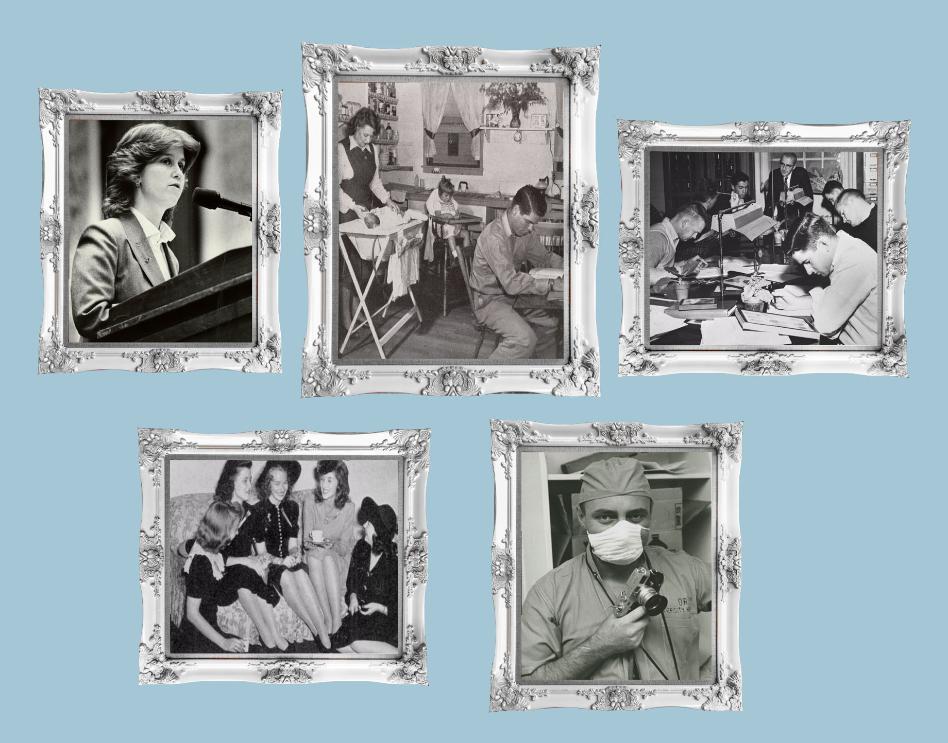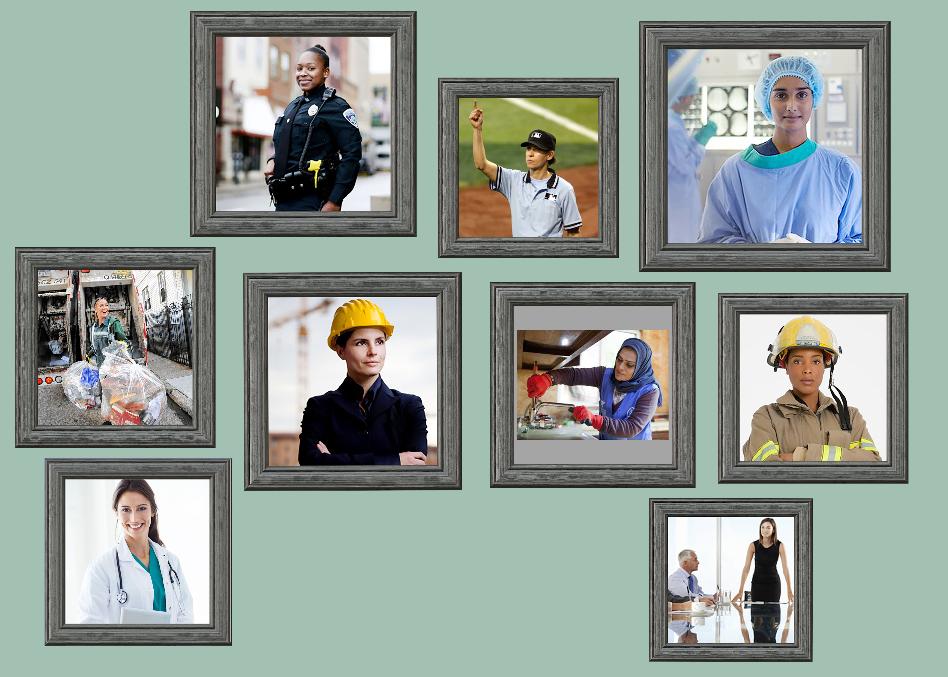UMD IN CONTEXT
Below, you will find pictures of UMD from 1950's yearbooks. As you view these pictures, consider for a moment the people in these photos. How are women depicted? How are men? Do you see any correlation between then and now, and if so, how does this make you feel?

Below you will find photographs of women in positions that are usually attributed to men. As you look through them, ask yourself similar questions as you did above. How does viewing women in more "masculine" roles make you feel? Are these pictures what you expect to see in day-to-day interactions?

MANIFESTO
The covert ways that male dominated spaces have maintained the status quo have not been addressed in our society. When a woman defies the gender roles prescribed for her, she gets social, emotional, and organizational sanctions. Her presence in a male dominated space is questioned if she falters in any way. It is now increasingly rare to experience overt sexism, but undermining behaviors are a common experience. Implicit biases against women leave them isolated and marginalized in their fields. Though there is an outward appearance of support for women in all careers, the high attrition rates of women in science, technology, engineering and mathematics shows that more has to be done.
Meritocracy is a prevalent belief in our society, but social biases undermine it. There is not an explicit ban on women in male-dominated fields, but there is an underlying dismissive attitude toward women's issues. People dismiss the problems of marginalized groups by ignoring the past and adopting a blind attitude. They take the view that all people are equal and that being in a minority group does not preclude someone from reaching her goals. It ignores the marginalization that occured before society adopted meritocratic views and conveniently places minority underrepresentation as a personal preference. This view makes it easier for people to ignore these issues without consequence. The path for women to get to the high positions in their field is not blocked off, but the path is filled with more obstacles than for men. Women have to deal with a social climate that is not welcoming.
Women hold a smaller portion of the science and engineering faculty positions at top research universities than do men. Also for women who have entered the workforce there is a high rate of attrition. For example, the number of women in computing has fallen from 35 percent in 1990 to just 26 percent today. Men and women can vastly differ in the sponsorship, money, and support they receive in the workplace, which can affect their choice in career paths.
We need to make our society recognize the social disparities that still exist. We need to recognize the implicit bias that we have and end it in all fields. We need to eradicate the workplace conditions in male dominated fields leading to the high attrition rate of women. Women should not be afraid to speak about issues they see. Let us all work toward a future where true equity exists.
CONNECTION TO UMD ARCHIVES
In the 1950’s, many typical jobs for women had certain requirements with regards to appearance. For example, in a booklet guide for careers for female graduates titled Careers for Women: Jobs 1958, found in the University of Maryland Archives says that both jobs as ticket agent and as hostess or stewardess “require attractive personalities and have specific physical requirements.”
That same booklet also says, “It is hard to predict the social changes ahead. We know that more of you are marrying younger and having more children than the previous generation. Some of you will be married immediately after college, if you are not already married. By the time you are 30 or 35, your youngest child will be in school. You will have much time on your hands. Even volunteer workers need training.”
Contact
University of Maryland, College Park, MD
1stepf2stepb@gmail.com

